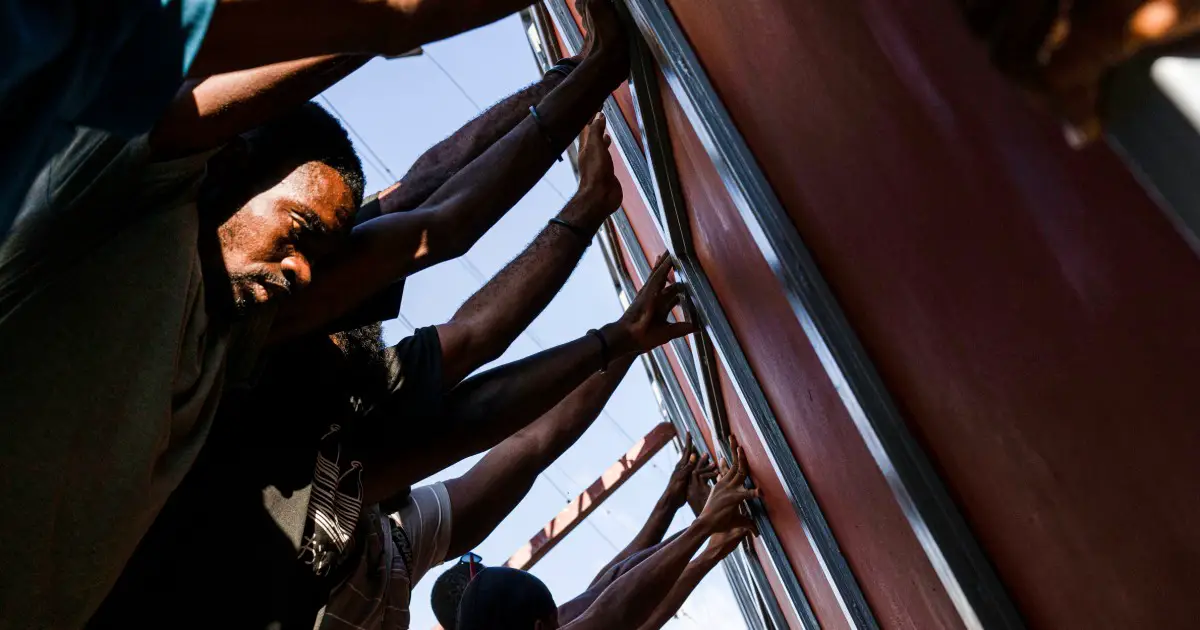
Violence in the capital has left some 160,000 people homeless, according to the IOM.
“This is hell,” said Nelson Langlois, a producer and cameraman.
Langlois, his wife and three children spent two nights lying flat on the roof of their home as gangs raided the neighborhood.
“Time after time, we peered over to see when we could flee,” he recalled.
Forced to split up because of the lack of shelter, Langlois is living in a Vodou temple and his wife and children are elsewhere in Port-au-Prince.
Like most people in the city, Langlois usually stays indoors. The days of pickup soccer games on dusty roads and the nights of drinking Prestige beer in bars with hip-hop, reggae or African music playing are long gone.
“It’s an open-air prison,” Langlois said.
The violence has also forced businesses, government agencies and schools to close, leaving scores of Haitians unemployed.
Manoune, the government immigration officer, said she has been earning money selling treated water since she has no work because deportations are stalled.

Meanwhile, Gédéon said he no longer plays the drums for a living, noting that bars and other venues are shuttered. He sells small plastic bags of water on the street and has become a handyman, installing fans and fixing appliances.
Even students are joining the workforce as the crisis deepens poverty across Haiti.
Sully, a 10th grader whose school closed nearly two months ago, stood on a street corner in the community of Pétion-Ville selling gasoline that he buys on the black market.
“You have to be careful,” said Sully, who asked that his last name be withheld for safety. “During the morning it’s safer.”
He sells about five gallons a week, generating roughly $40 for his family, but he cannot afford to join his classmates who are learning remotely.
“Online class is for people more fortunate than me, who have more money,” Sully said.
The European Union last week announced the launch of a humanitarian air bridge from the Central American country of Panama to Haiti. Five flights have landed in the northern city of Cap-Haïtien, site of Haiti’s sole functioning airport, bringing 62 tons of medicine, water, emergency shelter equipment and other essential supplies.
But there is no guarantee that critical items will reach those who most need them. Many Haitians remain trapped in their homes, unable to buy or look for food amid whizzing bullets.
Aid groups say nearly 2 million Haitians are on the verge of famine, more than 600,000 of them children.
Nonetheless, people are finding ways to survive.
Back in the neighborhood where residents are installing a metal barricade, sparks fly as one man cuts metal while others shovel and mix cement. They are well underway, and hope to finish the project soon.
Others remain skeptical, citing reports of gangs jumping into loaders and other heavy equipment to tear down police stations and, more recently, metal barricades.






